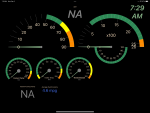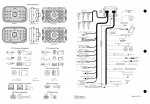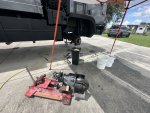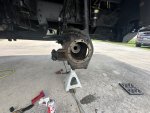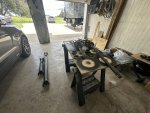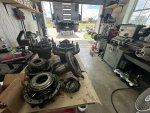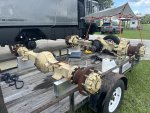Ronmar
Well-known member
- 4,151
- 7,975
- 113
- Location
- Port angeles wa
Torque IS what does all the work. HP is simply an expression of torque over time and represents the speed at which you can perform a particular task or the volume of work in a given timeframe. it was an expression of energy output created by james watt to sell steam engines to people who had only ever used and understood horses as a prime mover. Been confusing how things work ever sinceFrom sizing gentlest, I think of this as an analysis of Energy output and torque output. Torque is not energy, so it's a 2 part checklist. Enough torque to move the shaft at 1440, checked. Enough energy (Hp) to overcome wind and grade at 55 at 1440, not checked. Hence why after the 330 remap, I can maintain 52 up a 7% grade whereas before at 275, only maintained 43, with same gearing and almost identical torque curve of engine.
Something often overlooked is that it only really applies if you have enough surplus torque to actually perform the work at that RPM.
I prefer to think in terms of torque, or surplus torque, which is actually what the torque number is, what is left over to do work after the crank is spun to a given RPM. Thats why the number decreases above pk tq rpm as the pumping losses are consuming more and more of the surplus, as the pulses also get shorter. You only typically have 1/2 the available torque at pk hp as you do at pk tq…
Say are running along near peak HP RPM and run up on a slight hill. Even at full fuel the amount of surplus TQ you have is not enough to maintain speed so your speed and RPM decreases, back toward where you have more surplus tq until you reach the point where surplus tq = load. You have just re-defined your engine HP based on your available tq output
Dealing in terms of torque is simpler. The behavior in terms of tq also explain the better road performance reported on ecohubs. Say you have installed Ecohubs and are now tooling along at close to pk/tq RPM instead of pk hp RPM And roll up on that same slight hill. You already have the potential for nearly twice the available surplus torque, and the governor/ecu simply burns more fuel till torque and load reach equilibrium, all without loosing any speed… and on level ground you are not burning all that extra fuel to overcome the added pumping losses between pktq and max governed RPM. Like driving with an exhaust brake on…



